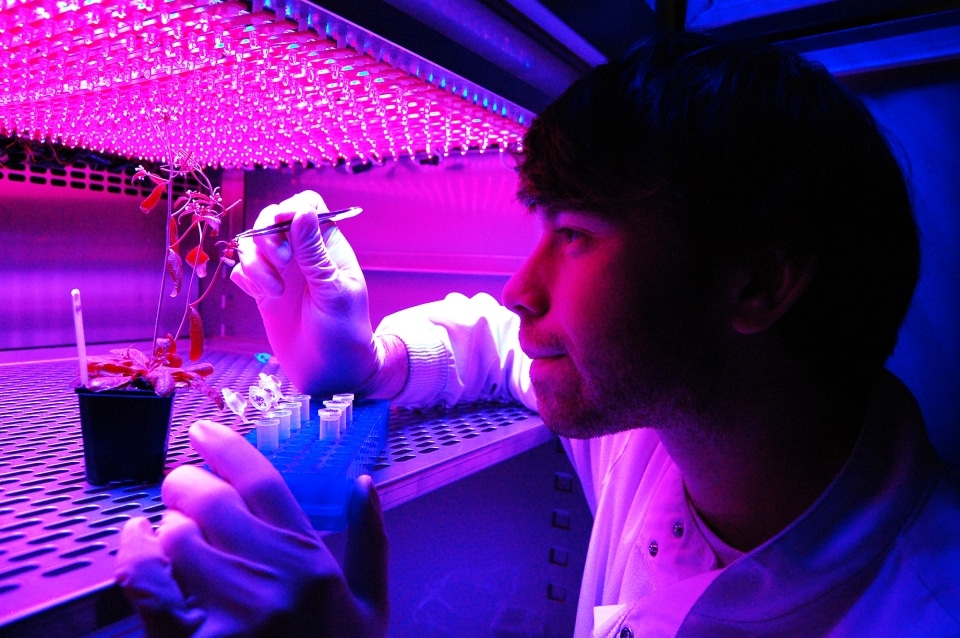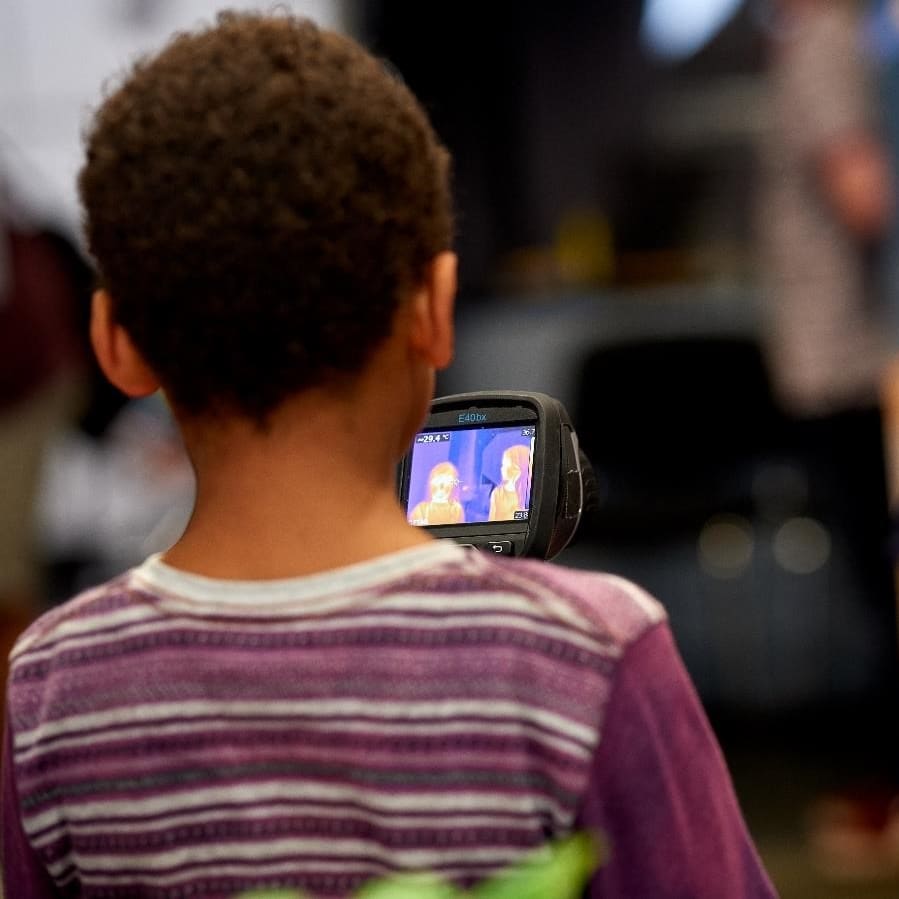
Delivery partners on our Destination Space and Explore Your Universe programmes will have an infrared camera. This may be a large hand-held one or a small FLIR camera that plugs directly into a mobile phone or tablet.
You can also create a near-Infrared camera from an inexpensive webcam and polarising filters. You can view a full guide to this hack on the ESA website here: www.esa.int/Education/Expedition_Home/Infrared_Webcam_Hack_-_Using_infrared_light_to_observe_the_world_in_a_new_way
Satellites looking back at Earth (Earth Observation Satellites) are often equipped with one or more cameras. These may take images in visible light or they may operate in different parts of the spectrum. Infrared cameras are often used because infrared light gives us useful information around things like crop health and vegetation cover.
Ideas of how you might use thermal imaging cameras for Operation Earth:
-You can tell the difference between healthy and unhealthy plants or living and artificial plants. This can lead to talking about how these cameras look at food security or deforestation from satellites
-The ESA Climate Detectives programme has activities using NIR camera at esamultimedia.esa.int/docs/edu/P15_Infrared_webcam_hack.pdf
-You could attach an infragram camera to a kite to act like a satellit. See the link at publiclab.org/notes/Roolark/01-01-2014/usability-of-public-lab-s-ndvi-and-kite-balloon-mapping-for-remote-sensing-in-academics-research
